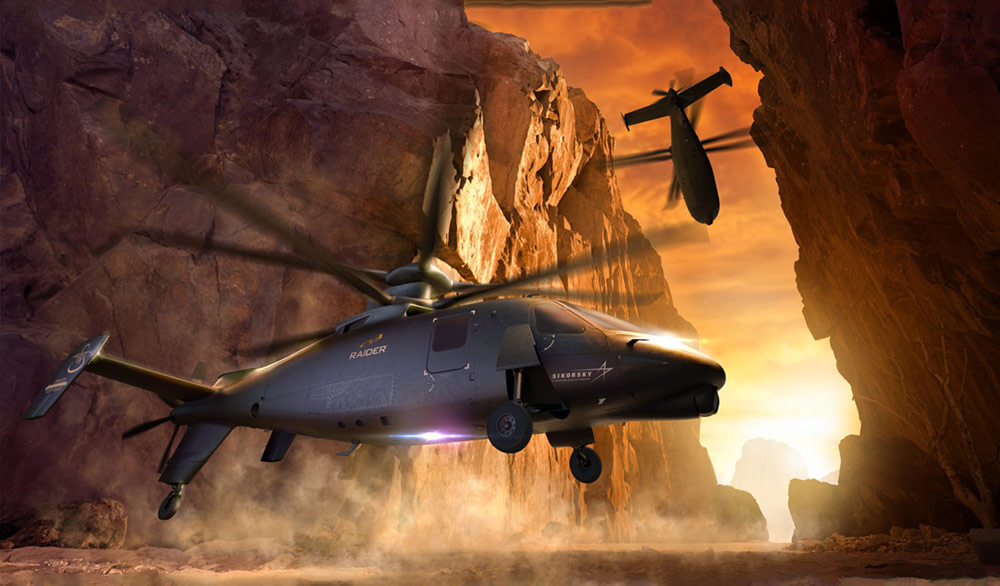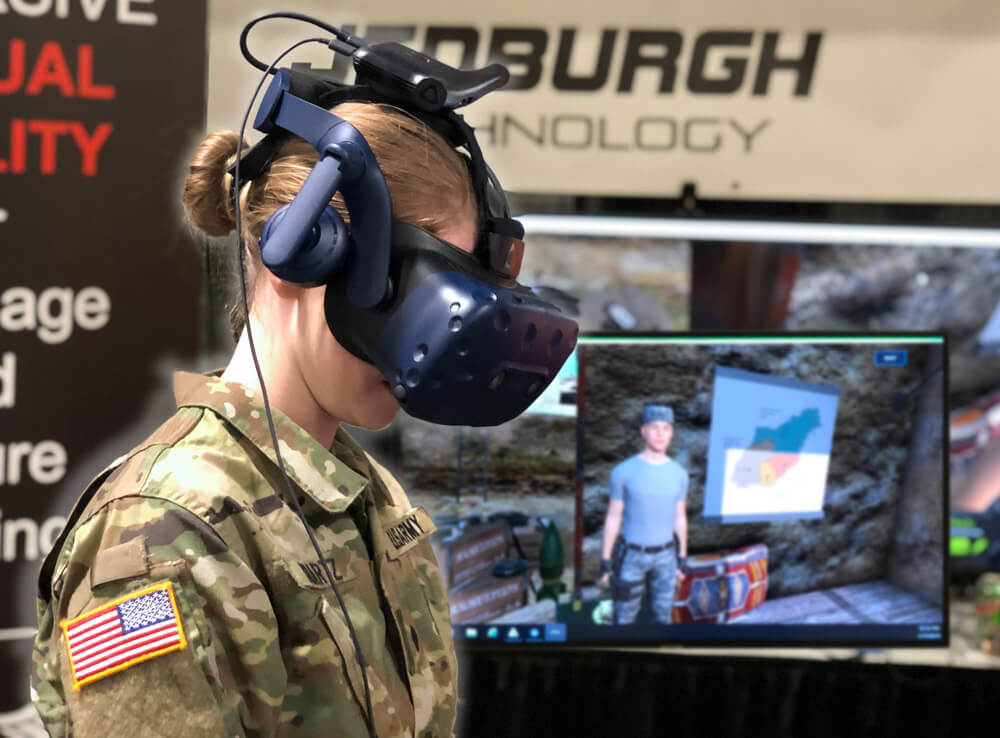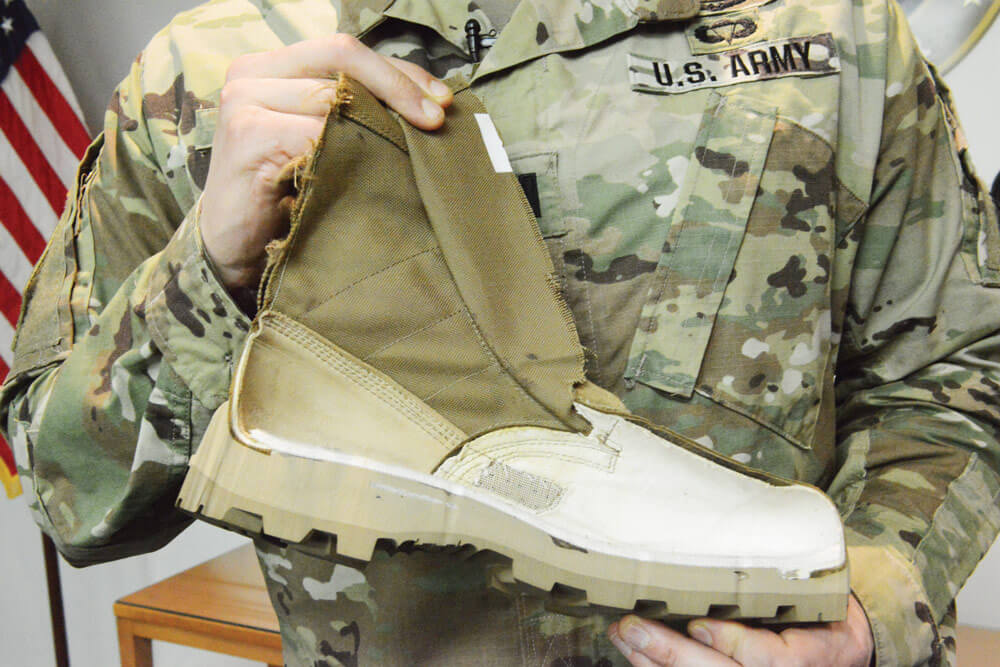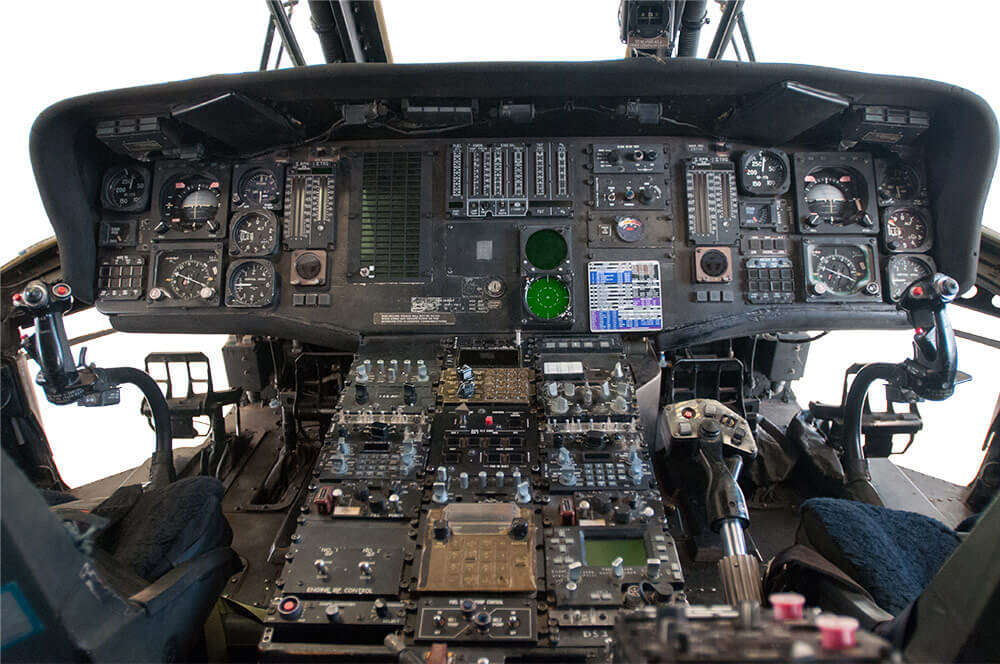Out with the Old, In with the New
Across the past few decades, the ongoing war against our Nation’s enemies has taken its toll on the Army’s helicopter fleet. Continued deployments and increases in combat and reconnaissance missions have long since begun to cause wear on the fleet. The National Guard alone has deployed more than 850,000 times since 9/11 to locations like Afghanistan, Iraq, Kuwait and Guantanamo Bay. To meet demand, in the past the Army has refurbished, remanufactured and upgraded the existing family of aircraft. Nevertheless, the U.S. vertical lift fleet is aging and fast approaching the platform lifespan of 40 to 60 years. Hence, the Department of Defense (DoD) has noted that the time has come for a new and improved platform of rotary wing aircraft.

Features:
• X2TM Technology
• Advanced Drive System
• Active Vibration Control
• Advanced Rigid Rotor System
• Manual Blade Fold
• Pusher Prop with Clutch
• Lift Offset Co-Axial Rotor
• Active Rudders and Elevators
• Retractable Gear
• Fly-by-Wire Flight Controls
• Cabin for 12 Combat Troops
• Crew of Four
Image courtesy Sikorsky Aircraft
“As the Department of Defense’s current fleet of vertical lift aircraft become older, there is an inherent need to increase our capabilities while ensuring our global overmatch through newer aircraft designs,” said COL Erskine “Ramsey” Bentley, Training and Doctrine Command capability manager for Future Vertical Lift, U.S. Army Aviation Center of Excellence, Fort Rucker, Alabama. “Future Vertical Lift is a joint initiative to help begin a modernization of our current vertical lift fleet across the DoD enterprise.”
Future Vertical Lift (FVL) is the DoD’s plan for the development of a next-level generation of military helicopters for the U.S. Armed Forces. Begun as an initiative in 2009, and later becoming a strategic plan in 2011, FVL will replace aging helicopters with a new fleet of manned and unmanned rotary wing aircraft that improve aircraft performance and survivability while significantly reducing operating costs. In doing so, the DoD will be providing aircraft that are able to fly farther and faster, carry heavier payloads, perform optionally piloted missions and reduce logistical footprints. The helicopters are also expected to be more reliable plus simpler and less expensive to maintain.
Through the implementation of FVL, DoD leaders hope to provide U.S. forces with the speed, range, payload and mission systems critical for success in future operational environments. FVL will create greater capability to overcome the constraints of complex terrain, higher altitudes, extreme temperatures and extended distances. The integration of manned and unmanned teaming and optionally piloted vehicles will provide new options for security, reconnaissance and logistics.
The FVL fleet is planned to consist of several aircraft, the first being an advanced unmanned aerial system platform capable of delivering targeting data for long-range precision fires and electronic attacks on enemy radar systems.
“We want to be able to spoof those radars, jam those radars, hunt those radars and kill those radars,” explained 7th Infantry Division Deputy Commanding General and Future Vertical Lift Cross-Functional Team Director BG Walter Rugen.
An attack reconnaissance aircraft is also in the early plans for development. According to BG Rugen, the aircraft will be optionally manned and “sized to hide in radar clutter, [meaning] to operate in the urban canyons of megacities.”

According to BG Rugen, these two aircraft form the FVL “advance team,” and their development is geared at deepening the interoperability between the ground force and fire teams to better detect and deliver lethal effects, assess those effects and then re-attack if necessary.
Set for later in the FVL development process is a long-range assault chopper that will possess significantly upgraded protection features and be capable of “exploiting windows of opportunity,” BG Rugen said.
In 2014, the Army selected two firms to develop FVL demonstrators. As part of a joint initiative, Boeing and Sikorsky – Lockheed Martin’s rotary wing aircraft expert division – and Boeing together built the SB>1 Defiant. The Defiant is a medium-lift chopper based on Sikorsky’s X2 coaxial design. The SB>1 Defiant was designed to provide the right combination of speed, lift and range for Army attack and assault missions. Its design increases overall maneuverability and agility while reducing development and life-cycle costs.
Textron Inc.’s Bell Helicopter is developing the V-280 Valor tiltrotor chopper. Designed to offer twice the speed and range of current helicopters, the V-280 promises to support ground maneuver and will be purposely built for squad plus enablers. The chopper is set to feature integrated cabin armor, fly-by-wire component redundancy, airborne battle boards that track mission updates in real time and an equipment package that will enable en route situational awareness through digitally fused reconnaissance, surveillance, intelligence and friendly force information.

The Army National Guard has a direct role in the outcome of FVL through Tennessee Army National Guard’s LTC Jay Deason. As the flight facility commander of the 1-107th Airfield Operations Battalion, LTC Deason is one of only four U.S. Army Soldiers selected nationwide to participate in the FVL program study, which took place in the early spring of 2018 in San Jose, California.
To be eligible for the study, candidates (preferably pilot instructors) were required to possess a minimum of 500 rotary wing flight hours. Participants of the study operated NASA vertical motion simulators with the intent to operationally assess the maneuverability and agility of FVL technologies.
According to COL Bentley, the study will help determine how “en route speeds and long-range requirements affect low-speed maneuverability and agility during the transition from en route speed to altitude.”
COL Bentley also noted that the results of the study will not be visible for 12 to 20 years.
“There is a lot of work going on now to ensure we get it correct and have the most effective designs we can get within that timeline,” COL Bentley explained. “Our study will feed any new start designs as a primary function; any effect on the current fleet will be through secondary effect of changes to advanced flight controls or human system interface data points collected during the study.”
While FVL systems are not expected to begin fielding until the 2030s, according to COL Bentley, progress is being made at rapid speed and “the program is moving along with good progression towards new aircraft in our DoD fleet,” soon making FVL a reality.
By Staff Writer Tatyana White-Jenkins


